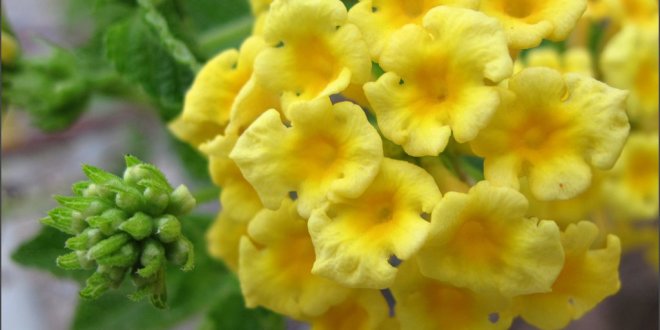Lantana is a great landscape plant. It attracts bees, butterflies, and hummingbirds. It is very drought-tolerant once established. Every winter I cut it back to its stumps; every autumn the plant has grown 12 feet wide. Obviously, you can prune it smaller.
Details
Family: Verbenaceae (ver-be-NAY-see-ee) (Info)
Genus: Lantana (lan-TAN-a) (Info)
Species: camara (kuh-MAR-uh) (Info)
Synonym:Lantana aculeata
Synonym:Lantana armata
Synonym:Lantana mista
Category:
Annuals
Tropicals and Tender Perennials
Height:
36-48 in. (90-120 cm)
Spacing:
36-48 in. (90-120 cm)
Hardiness:
USDA Zone 9b: to -3.8 °C (25 °F)
USDA Zone 10a: to -1.1 °C (30 °F)
USDA Zone 10b: to 1.7 °C (35 °F)
USDA Zone 11: above 4.5 °C (40 °F)
Sun Exposure:
Full Sun
Danger:
All parts of plant are poisonous if ingested
Bloom Color:
Pink
Magenta (Pink-Purple)
Red
Orange
Bright Yellow
Purple
Bloom Time:
Blooms repeatedly
Foliage:
Herbaceous
Other details:
May be a noxious weed or invasive
This plant is attractive to bees, butterflies and/or birds
Average Water Needs; Water regularly; do not overwater
Soil pH requirements:
6.1 to 6.5 (mildly acidic)
6.6 to 7.5 (neutral)
7.6 to 7.8 (mildly alkaline)
Patent Information:
Non-patented
Propagation Methods:
From herbaceous stem cuttings
Seed Collecting:
Allow seedheads to dry on plants; remove and collect seeds
Read more: http://davesgarden.com/guides/pf/go/578/#ixzz3HPh4F8bQ








